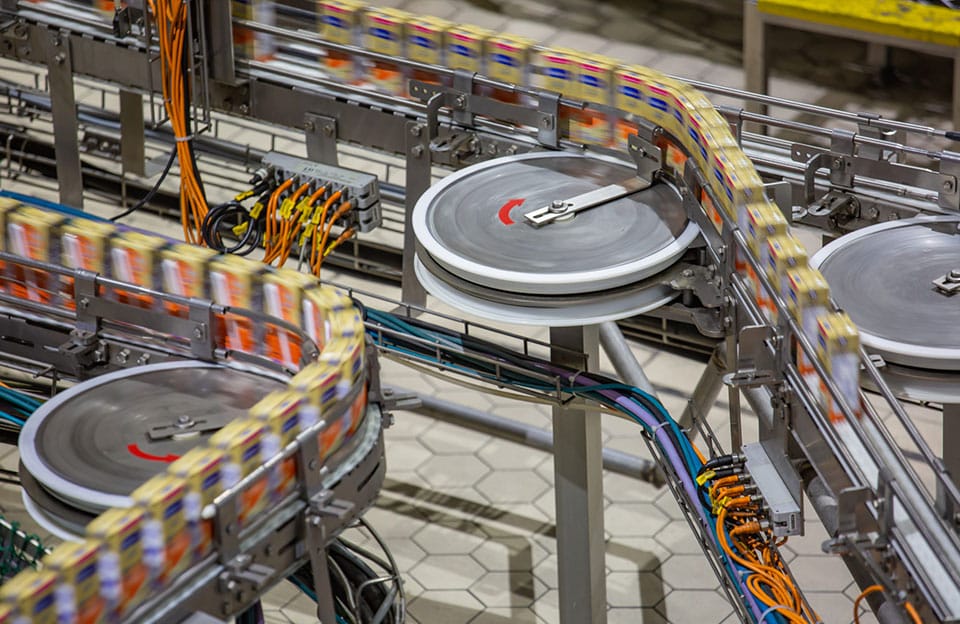A packaging machine is a type of equipment used in industrial and commercial settings to finish the process of packaging products. It is designed to efficiently and effectively package various items, such as food products, pharmaceuticals, consumer goods, etc. Packaging machines play a crucial role in streamlining manufacturers’ packaging process and enhancing product presentation and protection.
Reasons for the Increasing Sales of Packaging Machines
In recent years, the market share of the packaging machine has gradually expanded, and the sales volume has continued to rise. Here are some important points:
- Automation and Efficiency: Packaging machines offer automation capabilities that significantly improve the efficiency of the packaging process. By automating tasks like filling, sealing, and labeling, these machines can package products much faster than manual labor. This increased efficiency allows companies to meet growing demand, reduce production costs, and improve overall productivity.
- Cost Savings: Packaging machines can lead to cost savings in various ways. They eliminate the need for extensive manual labor, reducing labor costs. Additionally, these machines can optimize packaging material usage, minimizing waste and reducing expenses. Packaging machines contribute to fewer product losses and better inventory management by streamlining operations and minimizing human error.
- Consistency and Quality: Packaging machines ensure consistent packaging quality, maintaining product appearance and presentation uniformity. This consistency is crucial for branding and customer satisfaction. Machines can precisely seal packaging securely, minimizing variations with manual packaging. This results in higher product quality and reduces the chances of damaged or improperly packaged goods.
- Compliance and Safety: Many industries have specific regulations and standards regarding product packaging. Packaging machines can help ensure compliance with these requirements by many features. This compliance avoids penalties and legal issues and enhances consumer safety and trust in the products.
- Flexibility and Customization: Packaging machines can handle various products and packaging formats. They can be easily adjusted or reconfigured to accommodate different product sizes, shapes, and packaging materials. This flexibility allows manufacturers to respond to market demands and introduce new products or variations without significant retooling or retraining.
- Market Growth and Innovation: The packaging industry has been experiencing substantial growth and innovation. With the rise of e-commerce, there is an increasing demand for efficient and secure packaging solutions. Additionally, introducing new materials, sustainable packaging options, and smart packaging technologies has created opportunities for packaging machine manufacturers to offer innovative solutions that meet the evolving needs of businesses and consumers.
Packaging Machine Selection Guide
- Understanding Requirements: Clearly defining packaging requirements. Consider the type of product, such as its size, shape, and weight, as well as the desired packaging format (bottles, bags, boxes, etc.). Determine the required production capacity, speed, and specific features or functions the machine needs to perform.
- Researching Available Options: Conduct thorough research on the different types of packaging machines available in the market. Understand the capabilities, features, and limitations of machines. Consider factors like the machine’s versatility, ease of use, maintenance requirements, and reliability. Look for reputable manufacturers or suppliers with a track record of delivering quality machines and excellent customer support.
- Evaluating Machine Performance: Assess the machine’s performance by examining speed, accuracy, and efficiency. Look for machines that offer high production rates while maintaining consistent quality.
- Considering Flexibility and Adaptability: Choose a packaging machine that can handle a range of products and packaging materials. It should be easily adjustable to accommodate different product sizes and formats. Consider whether the machine can be upgraded or modified to meet future packaging needs.
- Assessing Cost and Return on Investment: Consider the initial purchase cost of the machine, as well as long-term operating costs and maintenance requirements. Evaluate the machine’s return on investment by analyzing increased production efficiency, labor savings, reduced material waste, and improved product quality. Calculate the payback period and weigh it against the machine’s overall benefits.
- Seeking Expert Advice: Consult industry experts, packaging consultants, or machinery suppliers for insights and recommendations.
- Considering After-Sales Support: Assess the level of after-sales support the manufacturer or supplier provides. Consider factors such as warranty coverage, availability of spare parts, technical support, and maintenance services. A reliable support system ensures that issues or maintenance needs can be addressed promptly, minimizing downtime and maximizing machine uptime.
- Conducting Site Assessment: Evaluate production facility and available space to ensure that the selected packaging machine can be properly installed and integrated into the production line. Consider factors like machine dimensions, power requirements, and any necessary modifications to the facility.
Conclusion
Packaging machines offer several benefits, including increased production speed, improved accuracy, reduced labor costs, and enhanced product consistency. The selection of a packaging machine depends on factors like the type of product, desired packaging format, production volume, and specific requirements of the industry or application.


